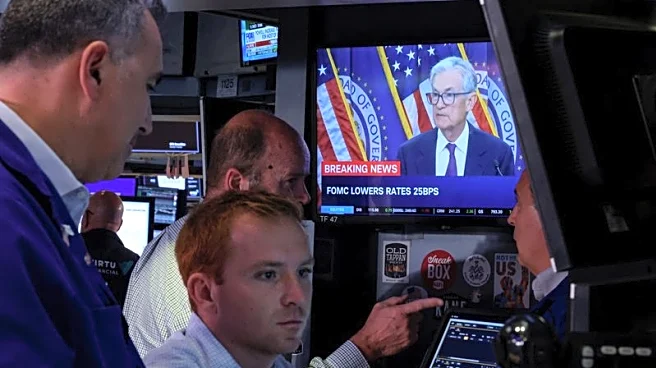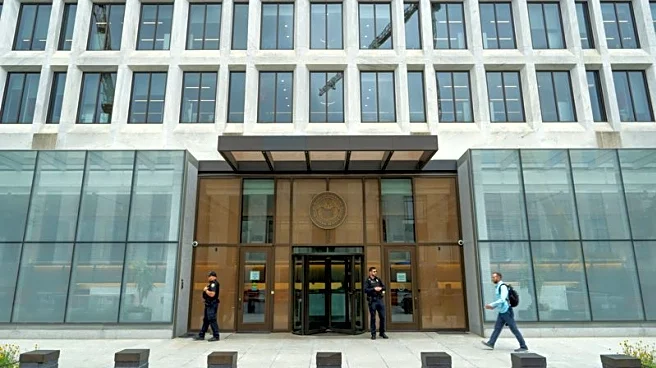What is the story about?
What's Happening?
The U.S. Federal Reserve has reduced its benchmark interest rate by 25 basis points, bringing it to a range of 4% to 4.25%. This decision, described by Fed Chair Jerome Powell as a 'risk management cut,' is aimed at addressing economic uncertainties rather than directly supporting a weak economy. The Fed has signaled that two more rate cuts are likely this year. This move is expected to influence global markets, particularly in Asia, where central banks may find more room to ease policy amid trade pressures and currency concerns.
Why It's Important?
The Fed's rate cut is significant as it may narrow the gap between U.S. and Asian bond yields, easing currency concerns and providing Asian economies with more flexibility to lower rates. This is particularly relevant for countries facing domestic economic challenges and trade headwinds. The decision could lead to a more accommodative policy stance across the region, potentially impacting global economic growth and trade dynamics. The move also reflects the Fed's balancing act between managing slower growth and inflation concerns in the U.S.
What's Next?
Asian central banks, including the Bank of Korea and the Reserve Bank of India, are likely to continue cutting rates in response to the Fed's decision. This could lead to a longer rate cut cycle in Asia, especially with the U.S. dollar on a weak trend. The Fed's future rate cuts may further influence global economic policies and market conditions.
AI Generated Content
Do you find this article useful?















